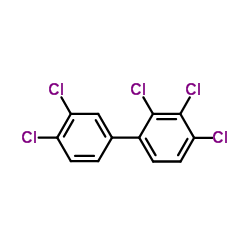Aroclor 1254 selectively inhibits expression of glial GLT-1 glutamate transporter in the forebrain of chronically exposed adult rat.
Lidia Strużyńska, Grzegorz Sulkowski, Beata Dąbrowska-Bouta
文献索引:Toxicology 300(1-2) , 12-8, (2012)
全文:HTML全文
摘要
Aroclor 1254, a commercially produced mixture of polychlorinated biphenyls, is known to cause many adverse conditions, including neurotoxicity. It has been recently postulated that upregulation of N-methyl-d-aspartate receptors (NMDARs) and enhanced glutamate signalling which leads to excitotoxicity, is the mechanism of Aroclor-induced neurotoxicity. To obtain insights into the mechanisms underlying glutamatergic overstimulation, we investigated the function and expression of sodium-dependent glutamate transporters which are known to regulate extracellular glutamate concentrations in the brain. Exposure to Aroclor 1254 was found to significantly lower the uptake of radioactive glutamate into gliosomal fractions obtained from adult rat brains. It also markedly decreased the expression of both protein and mRNA of GLT-1, the main glial glutamate transporter. This indicates that downregulation of GLT-1 may potentially lead to disturbances in glutamate clearance. The expression of GLAST, another astroglial glutamate transporter, was unchanged under conditions of Aroclor toxicity. Conversely, we observed enhanced glutamate uptake into nerve-endings fractions paralleled by increased EAAC1 protein expression. This may reflect the induction of protective mechanisms.Copyright © 2012 Elsevier Ireland Ltd. All rights reserved.
相关化合物
| 结构式 | 名称/CAS号 | 分子式 | 全部文献 |
|---|---|---|---|
 |
亚老哥乐1254
CAS:11097-69-1 |
C12H5Cl5 |
|
A novel toxicogenomics-based approach to categorize (non-)ge...
2015-12-01 [Arch. Toxicol. 89 , 2413-27, (2015)] |
|
Enormous PCBs increase in oysters from the coast of Guangdon...
2011-06-01 [Mar. Pollut. Bull. 62(6) , 1333-6, (2011)] |
|
Transcriptome-wide gene expression in a rat model of attenti...
2011-12-01 [Am. J. Med. Genet. B. Neuropsychiatr. Genet. 156B(8) , 898-912, (2011)] |
|
Transferability of a modified embryonic stem cell test using...
2012-02-01 [Toxicol. Mech. Methods 22(2) , 118-30, (2012)] |
|
Genotoxicity potential of a new natural formicide.
2012-03-01 [Environ. Sci. Pollut. Res. Int. 19(3) , 628-35, (2012)] |